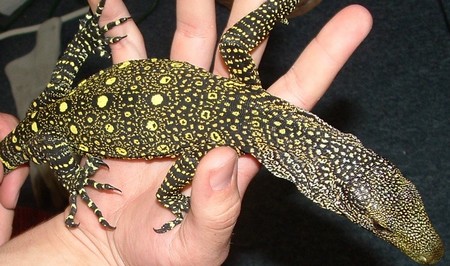Lizards are beautiful and can make wonderful pets – but many owners are surprised by how large, strong, and sometimes aggressive Lizards become as they mature. Regular, consistent, gentle handling is absolutely necessary to tame iguanas and keep them tame and manageable as they get larger.
The following are the basic steps involved in taming an lizard
- Give a new lizard a couple of weeks to settle in before starting the taming process. Establish a routine for feeding, cleaning, etc. – a predictable daily routine will provide a sense of security for the lizard.
- Talk to the lizard as you do routine tasks, and keep the lizard in a place where it can observe you going about your routine. This will help him to realize our presence.
- Spend time just watching and talking to the lizard. Use his name as they do tend to recognize their names.
- Place your hand in the cage and approach the lizard. Do this from the side rather than from above, which the lizard will likely perceive as a threat. If the lizard makes aggressive postures or scrambles around in a panic, back off a bit but keep trying, while speaking in a soft gentle voice. Make sure movements are slow and smooth. If you immediately stop trying, the lizard thinks he is training you! Repeat this step for a while until the lizard is more used to your hand.
- Now try to pick up the lizard. If it is a smaller lizard, then scooping it up under the belly should be sufficient, but if he is larger, then supporting both under the belly and the pelvic (lower belly, upper tail) areas will be necessary. Before attempting this, make sure the room is secured, with no means of escape (block of any space, however small, an lizard could squeeze through) and any breakables put away (remember lizards are good climbers too). If the lizard gets away on you, this will help in the capture process.
- Try not to put the lizard down until he is calm – that way it learns that being calm is what gets it put down rather than struggling. If the lizard gets away from you, don’t panic and chase him – let him calm down, then approach slowly speaking quietly. You may end up having to chase the lizard of course, but this is best avoided if possible. Never grab for the tail – lizards can drop their tails as a defence and you will be left holding a tail while the lizard is still on the loose!
- As the lizard becomes more accepting of handling, you can be more responsive to his moods – if he is usually okay with handling but is tense or signalling with body language that he is not comfortable, then you can respect that.
